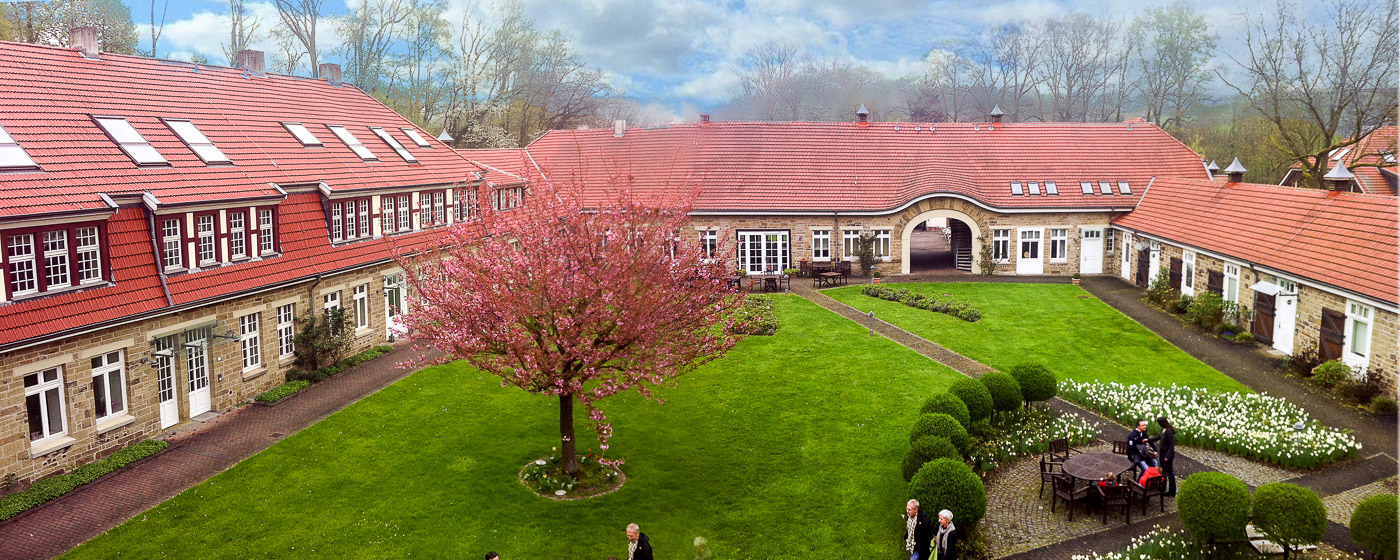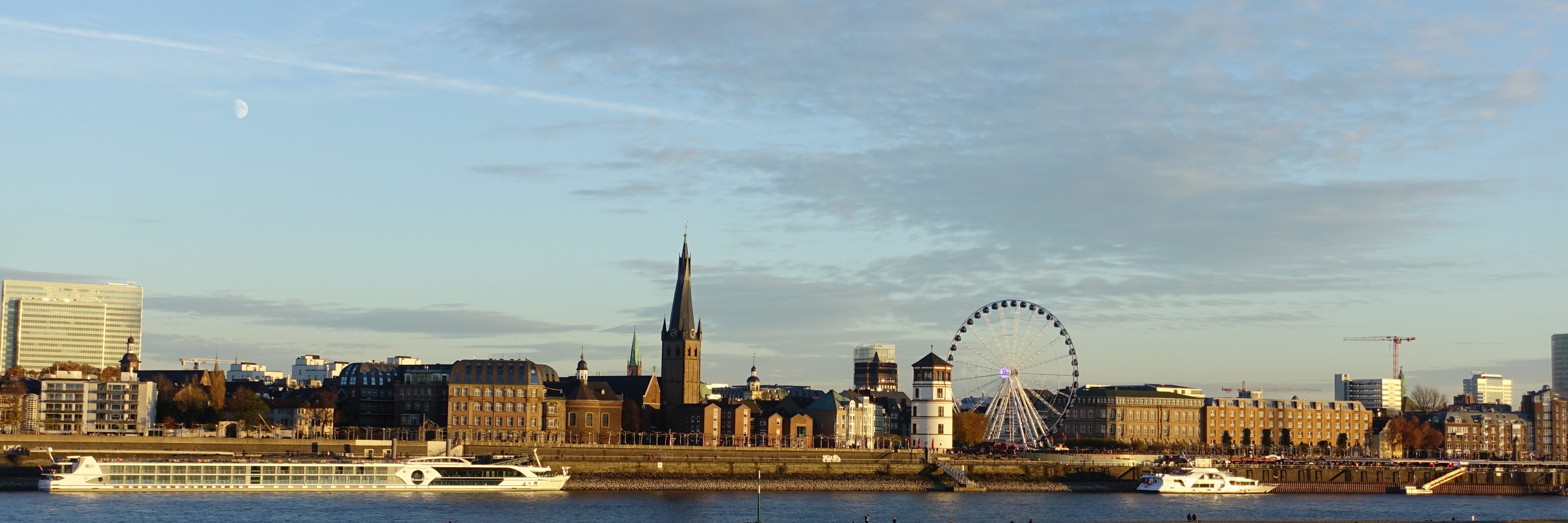A few days ago I took Tapio, my mountain bike, out for a ride through Düsseldorf’s most neglected nature preserve: Hubbelrath Valley Creek.
This is a narrow valley around Hubbelrath Creek, a narrow, slow-moving creek originating in the hilly Bergisches Land about 10 km northwest of Düsseldorf. The valley was formed by erosion and has fairly steep sides called ‘Siepen‘ (g) in the local dialect. The valley’s rich loess soil made it an ideal place for farms, and several large estates still survive.
The valley itself, and the trail within it, are pretty neglected. The main reason for this, as an account by a local nature group (g) attests, was the placement of a large landfill for household trash on one side of the valley. The landfill was found to be seeping chemicals into the valley, so it was excavated, and the household trash was removed and incinerated. The landfill was later used for construction waste, but is now in the process of being sealed and reforested. Ironically, though, the nearby landfill probably helped the valley regain its natural characteristics, since it kept people away.
The trail proper starts next to a huge country house and stable complex called Mydlinghoven Farm:
 The oldest parts of the historically-protected complex date to 1460, and it was most recently expanded into a stable in 1915. After the stables closed, the area was transformed into a restaurant, then into a seniors’ home. After those closed, the future of the complex was uncertain until 2016, when a cooperative bought and removated it. It’s now a mixed-use “alternative living” community called “Wir vom Gut“, (“Us from the Farm”) which combines senior residence with apartments for young families and for people who just want to get somewhat (but not completely) away from it all. It’s sort of like a semi-commune, in which people share tasks and hang out a lot. They seem to enjoy living there.
The oldest parts of the historically-protected complex date to 1460, and it was most recently expanded into a stable in 1915. After the stables closed, the area was transformed into a restaurant, then into a seniors’ home. After those closed, the future of the complex was uncertain until 2016, when a cooperative bought and removated it. It’s now a mixed-use “alternative living” community called “Wir vom Gut“, (“Us from the Farm”) which combines senior residence with apartments for young families and for people who just want to get somewhat (but not completely) away from it all. It’s sort of like a semi-commune, in which people share tasks and hang out a lot. They seem to enjoy living there.
To reach the trail, you ride past this estate into a meadow behind it. There are no signs for the trail, the trail-head is nothing more than a slight gap in the vegetation. I tried to enter it last year, but it was closed off with red-and-white tape. This time, I vowed to ride it no matter what. And lo and behold, no tape.
The trail is narrow single-track lined with stinging nettle and thorny bushes and creepers, including blackberries. I wish I’d brought a machete. The trail is also crossed by roots and fallen branches which create tripping hazards. I didn’t even think of trying to bike it — thorny branches and stinging nettle flaying my eyeballs isn’t my idea of fun, although I won’t kink-shame you if it’s yours. The first part of the trail, heading due south from Mydlinghoven Farm, is also interrupted by fallen trees seemingly about every 100 meters on average. Some of them have been chainsawed to free the trail, but most have just been left as they are, with their massive root-clusters sticking up into the air. The final problem with the trail is that you can’t see the creek from it. The creek runs off to one side, screened by vegetation. Parts of the creek-bed are actually fenced-off to prevent the organic Galloway cattle who graze nearby from trampling it. But the attraction is not really the creek, as such, but the marshy lowland surrounding it.
So, the trail’s poorly-maintained, muddy, blocked by fallen trees, runs by the side of a former landfill, and isn’t even a proper creek-side trail. So much for the downsides. There are plenty of upsides, though. First, alder, fir, and birch trees provide plenty of shade. There’s an amazing density of birdsong. The tall grass, the marshy patches, the standing and fallen trees, the bird and bat boxes, and the lack of humans or dogs make for an ideal avian retreat — 55 species have been spotted here, including black woodpeckers, red kites, kingfishers, herons, and sandpipers. There are also plenty of somewhat exotic plants which thrive in marshy conditions, such as loosestrife, great horsetail, and meadowsweet. Rich, pungent odors (most of them pleasant, all of them interesting) abound — every few steps brings a fresh olfactory bonanza.
About 400 meters south of Mydlinghoven Farm there’s an abandoned house in a small clearing that’s decaying most picturesquely. A bit further south is a large meadow with two rusty fence-gates standing in isolation. There are also a few metal measuring-station tubes in the meadow, presumably from the time when the landfill was in operation. Given that there are no humans around for kilometers, the traces of former use lend the trail a pleasantly spooky, slightly post-apocalyptic flair. Next time I’m going to wear hiking boots, bring a machete, and do some more exploring.



























